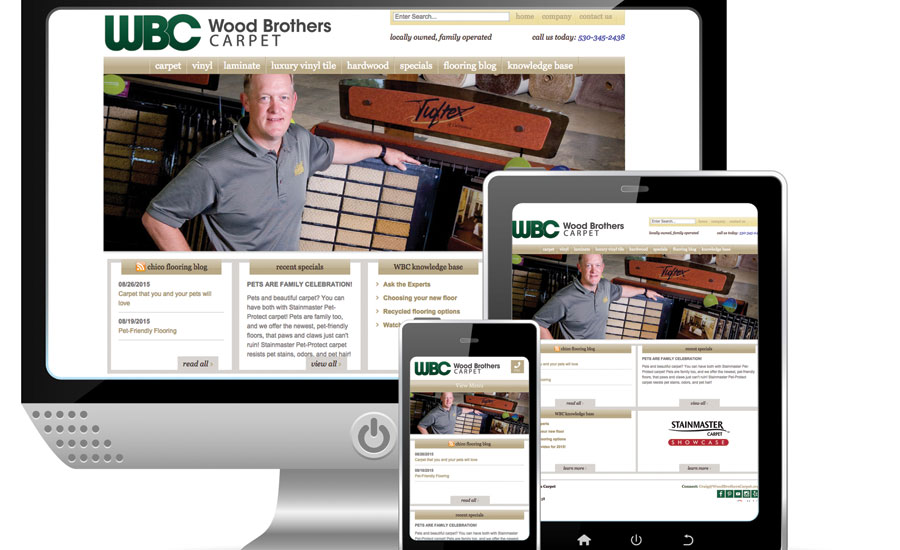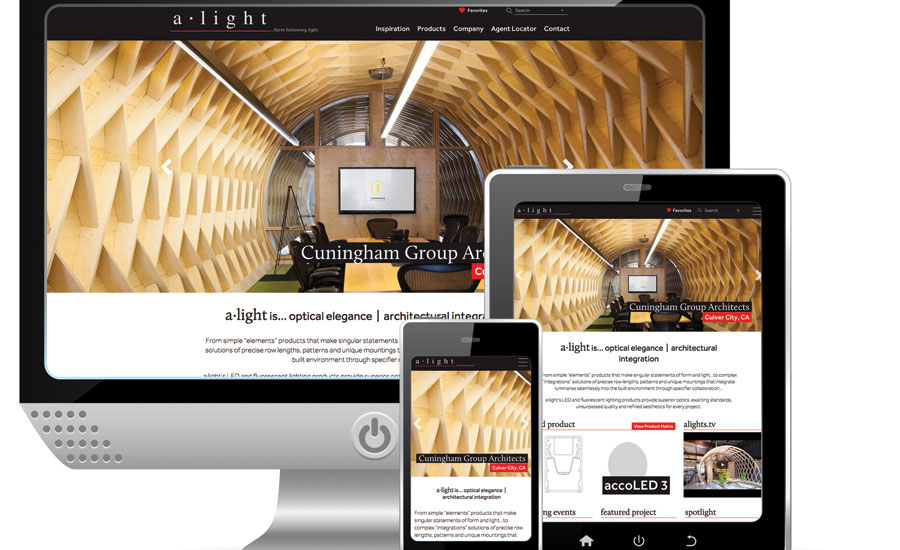Finding Your Ideal Flooring Customers Through a Website Redesign

Chico, Calif-based Wood Brothers Carpet has grown its business with a new website design, including a blog that shares tips and showcases products to its customers.

Lighting manufacturer a•light opted for a website redesign that offers a contemporary look and streamlined functionality that’s “easy to update and manage as our product lines and client base grow,” the company said.




Wouldn’t it be a dream if your website could be more than a yellow pages ad and instead become a magnet for attracting more of your ideal customers online? Like most retailers, you probably have a website out of necessity so your customers can find your location, hours and general information about your company story and the product lines you carry. For those who want more out of their website, follow these seven tips.
1. Decide on which customer is your ideal customer.
The first thing you need to do is define who your ideal customer is. Depending on your business, it could be a high-end interior design firm, a mom who loves to redecorate, a house flipper, a do-it yourselfer or a contractor. Most companies can have up to three types of ideal customers. For the purpose of starting out, pick your best customer—the one that is most profitable and your staff loves working with the most.
2. Get specific about your ideal customer.
Once you have an idea of who your ideal customer is, start documenting the specifics of who they are. What are their demographics? What is the state of mind they are in when they’re making a decision? What is their budget and timeline? What products do they buy? What questions do they ask when they come into your store?
The more clarity you can get on your ideal customer, the better. Involve your staff so everyone at your company is actively thinking about the qualities of your ideal customer. When you’re done, give your ideal customer an easy-to-remember name (for example: Barry Builder, Posh Penny, Flipping Frank) and place the description of your ideal customer in a place where it is accessible and top of mind to everyone in your company, whether that be the staff break room, the company intranet, or somewhere else.
To be positioned as an expert in your industry, it is critical to create a content strategy that aligns with the needs of your ideal customers.
3. Restructure the home page of your website for your ideal customer.
Now that you know your ideal customer, look at your current home page through their eyes. Do the pictures resonate with the needs of your target audience? Does the site identify with the problem they can solve? Can they clearly navigate to the products and services they are most interested in?
Work with your internal marketing team or web development company to give your homepage a makeover. Create clear paths that direct your visitors to the information they need to make a decision on your site. Your homepage is like the entryway to your showroom — give your customers a “wow” first impression and be sure to lead them in the right direction.
4. Create new content for your ideal customers.
To be positioned as an expert in your industry, it is critical to create a content strategy that aligns with the needs of your ideal customers. Wood Brothers Carpet, a flooring company in Chico, Calif., uses their blog to give tips and showcase products for their ideal customers’ common questions.
Since they started adding fresh content to their website, Craig Main, owner of Wood Brothers Carpet said, “Our business is growing and it’s a combination of continually updating the website and doing blog posts that talk about different aspects of flooring. Our efforts have singled Wood Brothers Carpet out in our market as ‘the answer people’...Here’s how you clean bamboo. Here’s how to get stains out of vinyl flooring. We’ve had more customers with creative projects walk in the door, which is fun.”
5. Present your content where your ideal customers are searching.
Are your customers on Pinterest? Houzz? Do you constantly have your iPad out in the showroom or are looking at examples on your customer’s phones?
Make sure your website is responsive so your customers can easily browse your website content when they’re not at their desktop. The latest data shows mobile digital media time in the U.S. is now significantly higher at 51% compared to desktop (42%). Add “Pin It” and “Like” buttons to your online project portfolio so you can encourage social sharing.
6. Use your website as a tool for what your ideal customers want.
a•light, a lighting manufacturing company in Oceanside, Calif., recently redesigned their site as a tool for architects to easily find everything they need for their project plans.
“Our clients needed an online resource they could consult to effectively spec projects,” said Ron Lancial, CEO of a•light. “We saw this opportunity for a new site as adding a comprehensive high-value sales tool to walk them through the process.”
“As our sales team works with architects, designers, lighting specialists, estimators and specifiers from around the country, our new website really presents our products well, with a look and feel that stands up against the large-scale e-tailers,” Lancial added. “It’s important for us to showcase our offerings in a very specific light, and we now have the functionality we need, with a contemporary look that’s easy to update and manage as our product lines and client base grow.”
Since the launch, the site is experiencing an average session duration of 3 minutes, 50 seconds, and customers have noted enhanced visuals and overall usability.
7. Add social proof with testimonials from other ideal customers.
Social proof is using what others say about you to influence behavior. Involve your whole company in making an effort to gather testimonials from your ideal customers on your website. WikiJob added testimonials to their site and improved their conversion rate by 34%.
For example, every quarter, budget for a video testimonial on-location in your customer’s finished space to record their experience working with you. Train your sales team to ask happy customers for reviews on Yelp, Google My Business, or Houzz after you’ve completed their project.
It can be hard to figure out what to put on your website because you are so close to your business, especially if you’ve had a website for a while and it hasn’t been a sales driver. Don’t give up. You know from experience that change is constant and your website should be no different. Use these seven steps as a way to get started. Your website is a living, breathing marketing tool for your business and can be a magnet for attracting your best new customers if you put the effort into updating your site with new content, tools, and fresh design that your ideal customers will love.
Looking for a reprint of this article?
From high-res PDFs to custom plaques, order your copy today!










